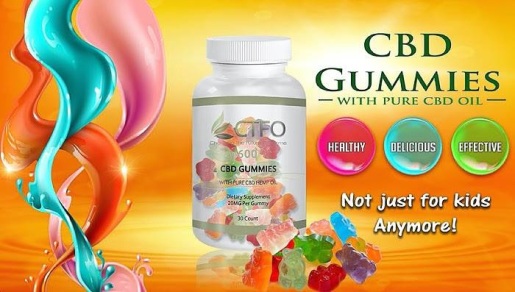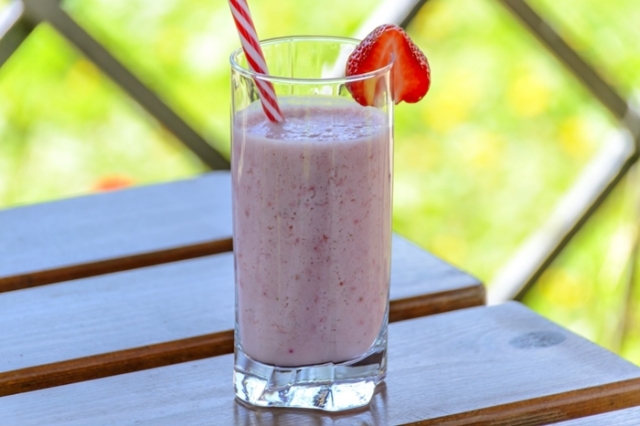A Beginners Guide to Protein Shakes
Protein shakes aren’t just for weightlifters and aerobics instructors. If you’ve always wanted to get in on the protein shake takeover, but weren’t sure where to start, our guide is the kickstart you’ve been looking for.
What’s the big deal about protein shakes?
Some of the misconceptions about protein shakes probably come from the mass-marketed meal replacement shakes, so let’s get that out of the way first: we’re not talking about the kind of meal replacement shakes advertised on television. Those shakes are often full of chemicals and sugar and promise fast weight loss without any substantiation. The general rule is this: if it’s a protein shake that comes in a can, stay away.
The kind of shakes we’ll be talking about here are loaded with fresh, healthy ingredients. They have zero preservatives, no added sugar, no fake colors or flavorings, and no chemicals. The only downside is that you’ll have to make them yourself, but it’s much, much easier than you may imagine.
So why would you even bother making protein shakes? Because protein is the building block of life, and there’s a good chance you’re not getting enough of it. Most Americans rely on fatty red meats instead of lean protein, and it’s so much easier and cheaper to grab carbohydrates that many of us skip protein for our snacks (or meals) altogether.
According to the US National Library of Medicine, protein is so powerful that when men were put on a high-protein diet, their thoughts about food were lessened, they had less desire to eat at night, and they experienced increased fullness throughout the day. A separate study on high-protein diets found that protein was so effective at increasing feelings of fullness that the study participants consumed an average of 441 fewer calories than their low-protein counterparts.
On a metabolic level, protein takes much more work for your body to digest than other forms of food like simple carbohydrates, so you’ll use more calories digesting a piece of chicken than you would a bagel. Protein also contains the amino acids your body needs to build lean muscle that will burn calories even when you’re at rest, unlike fat.
Interestingly enough, however, protein isn’t just for getting thin: if you’re trying to pack on muscle, plan on becoming fast friends with protein—it’s the only way to repair muscle and build new tissue. If you’re intent on building bulk, plan on making protein a key player in your new diet; specifically, shoot for at least 20-30 grams of protein in each of your main meals.
Protein is vital but depending on the source, may not be as portable or easy to prepare. It’s not very cheap, either: a cut of salmon can easily run you $10, while a Snickers candy bar is about $1 and doesn’t involve cooking. Cheap carbohydrates are everywhere while meaningful nutrition is difficult to grab on the go.
This is why protein shakes are a good solution: they’re portable, inexpensive, and delicious. They’ll help you reach your recommended level of protein (use this interactive protein calculator to find out how much is right for you). Oh, and did we mention that making a protein shake is much easier than figuring out how to grill the perfect steak?
Differences in Types of Protein
The most important component of your protein shake is, obviously, the protein powder. Though if you’ve ever looked for a protein powder, you know how overwhelming it can be. Walk into any health food store and you’ll find a dizzying amount of powdered protein, often in giant tubs that run anywhere from $10 to over $80.
Here’s the difference in types of protein:
Whey – Whey protein is derived from milk (remember Little Miss Muffet who was fond of her curds and whey?) and is a complete protein with all nine essential amino acids. Whey protein can be found in three forms: whey protein concentrate (low levels of fat and low levels of carbohydrates), whey protein isolate (processed to remove all fat and lactose; usually about 90% protein), and whey protein hydrolysate (easy to digest due to being “predigested” and has very low allergy potential).
If you are on a low-calorie diet but still want as much protein as you can get, go with whey protein isolate. If you’re working out, you’ll need both the fat and the carbohydrates found in whey protein concentrate. If you are vegan, avoid whey protein. If you are allergic to milk, avoid whey protein.
Plant Protein – Protein doesn’t just come from animals. You may find all sorts of plant-based protein powders in the supermarket—soy, pea, rice, hemp, and even pumpkin all contain protein. Plant protein is a solid choice if you’re vegan or allergic to milk or have a gluten intolerance. However, they tend to be supplemented with sugars and fillers to make them more palatable. Some, like hemp protein powders, are naturally higher in calories due to a higher fat content and don’t make a good choice if your goal is weight loss. Also important to note is that soy (if you’re considering a soy protein powder) can interfere with hormones (especially estrogen) if used in excess. If you choose a plant-based protein, choose one that isn’t laden with chemicals, carbs, and sugars.
Beef Protein – Beef protein does not actually come from the meat of the cow, but rather powdered bits of other parts (ligaments, ears, etc.). This means that most beef protein powders are actually gelatin and don’t contain the amino acids found in milk or beef meat; these are often added to the powder. Beef protein powder is fine for those sticking to a paleo diet and who are willing to pay the extra price, but don’t be fooled into believing that beef protein powder is just as nutritionally beneficial as a grass-fed steak. If you are allergic to milk and can’t find a plant-based protein powder you enjoy, beef protein powder is a viable option.
Egg Protein – If you’ve ever seen a bodybuilder crack a whole raw egg into his smoothie, it shouldn’t surprise you that egg protein powder exists. Egg protein is normally made from egg whites and has a very high amount of protein per scoop. However, since the yolk is not used, you do miss out on its nutrients and minerals. The other issue is that many people are allergic to eggs, especially children and young adults, so if you have an egg sensitivity, avoid egg protein. Egg protein is also a much pricier protein supplement. If you’re looking for a complete protein without the fats, sugar, or calories of other proteins and you don’t mind paying more for it, egg protein may be right for you.
What’s In That Shake?
Once you’ve found your perfect protein powder, it’s time to add in some other yummy ingredients.
All protein shakes need a liquid base, which means you’ll need to start with water or some type of milk. Here’s a breakdown of the effect your liquid base will have on your shake:
- Water – Tasteless, helps “cut” the shake to make it runnier.
- Ice – Will chill your shake without having to refrigerate it; adds some crunch.
- Almond Milk – Great for those who are lactose intolerant. Has a smoother, creamier texture than regular milk and goes well with strawberries, bananas, and mangoes.
- Rice Milk – Not as thick as almond milk. Great for those with nut allergies. Goes well with chocolate protein and denser fruits.
- Coconut Milk – Doesn’t have an overwhelming coconut flavor, but adds a tropical feel to your protein shake. Goes well with pineapple and melons.
- Hemp Milk – The heaviest of milks. Good for thick, desserty protein shakes.
In general, you’ll want to avoid fruit juices and stick primarily to milks and water in your shakes. For a treat, you can also try chocolate or strawberry milks.
Next, decide which solids you’d like to add in. Protein powder acts as a thickener and will take on the flavors of whatever fruits or other solids you add, so even though you may have more protein powder than strawberries, for instance, you’ll end up with a strawberry shake. If you don’t know where to start, here are the most often-used fruits: strawberries, blueberries, bananas, and mangoes. If you have fresh fruit, that’s fine, but it’s easier and cheaper to buy frozen fruit.
Take a look at this basic recipe for a strawberry protein shake:
- 10 ice cubes
- 1 cup milk
- 2 scoops protein powder
- 1 cup strawberries
Pretty simple, right? Milk, ice, solids (the strawberries), and protein powder. You can take this basic recipe for a protein shake and do whatever you’d like with it—add some peanut butter, put in blueberries instead of strawberries, substitute sugar-free pudding mix for one scoop of the protein powder, or drop in a handful of chocolate chips (if you are looking for a sweet treat). The only rule with a protein shake is that it needs to contain protein; beyond that, you’re only limited by the size and power of your blender. Which brings us to…
Blender Tips
There’s a correct order for loading your ingredients into your blender, and it’s important to follow or else you’re likely to have a mess on your hands. Put your liquids in first. This acts as a lubricant so the blades can work through the rest of the ingredients. Next, put in softer, high-moisture foods like fresh fruits and vegetables. Last, put in the solids: frozen fruits, vegetables (if you are into that sort of thing) and ice.
If your protein shake is too thick (and/or the blades are having difficulty turning), add more liquid. If you notice that the shake is too watery, add in more protein powder or more solids.
This is basic, but bears repeating: never remove the lid of the blender while it is on. And never, ever reach your hand into a blender that is plugged in. If you wish to add ingredients to your smoothie, most blenders have a large clear plastic plug in the lid that can be twisted to allow for the easy addition of more ingredients while the blender is running.
Superfoods
Ready to take your smoothie to the next level? Here are ten superfoods that add flavor, texture, and a whole lot of goodness to your protein shake:
- Acai – This delicious Brazilian berry is loaded with antioxidants, fiber, and protein. It has a creamy consistency and tastes almost like chocolate. Add it to your shake, then top it with granola for a spectacular breakfast.
- Camu Powder – This powder has more vitamin C than an orange and has a delicious tartness that pairs well with many fruits.
- Avocado – The beloved creamy green gem is packed with healthy fats, vitamins, and minerals to give your smoothie an extra nutritional boost.
- Cacao Powder and Nibs – It’s chocolate. Do you need any more persuasion? Oh, and it’s loaded with antioxidants. Cacao nibs go well with Acai berries and are delicious sprinkled over any smoothie.
- Spirulina – Yes, it’s algae. However, it’s filled with protein and omega fatty acids and its flavor can be hidden in any protein shake.
- Flax seeds – Contain fatty acids and fiber. Flax seeds have been shown to help with bowel regularity and immune system health.
- Chia – These miraculous little seeds are full of health benefits. They contain iron, calcium, minerals, and antioxidants.
You can add one, two, or all of the above to your protein shake for a little extra boost.
Your New Routine
Now that you’re a protein shake champion, it’s time to incorporate shakes into your daily routine. After all, finding ways to get extra protein in your diet is a must if you’re trying to lose weight or bulk up. If you can’t bear the thought of having a shake for breakfast, then have one for a snack or for dessert. The timing isn’t as important as committing to your new healthy habit. And this is one healthy habit that’s just downright delicious.







You must be logged in to post a comment.